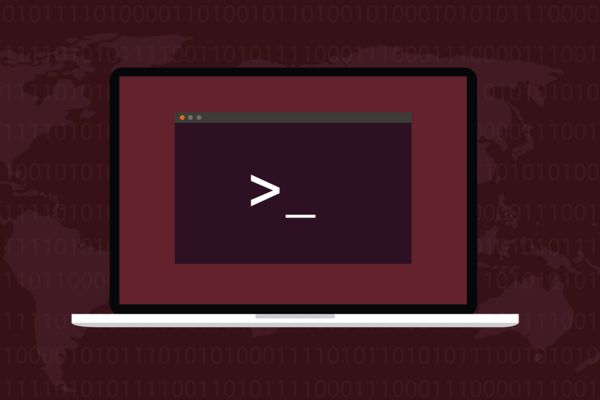
Top 5 Linux Text Editors Plus How to Install Notepad++

Learn how to install Notepad++ on Linux with our simple guide, even though it doesn't have official support Plus, explore 5 noteworthy alternatives to Notepad++ and see which one suits you best
Running Notepad++ on Linux is not officially supported, but you can still do it using Wine, a Windows emulator. If you prefer a more straightforward installation, there is a snap package available that includes Notepad++, Wine, and all dependencies. However, it might be worth considering a Linux-native editor instead. Notepad++ is a popular choice on Windows, but there are other options that might suit your needs better on Linux.
Does My Favorite App Run on Linux?
Transitioning from Windows to Linux can be challenging, requiring significant learning and adjustment. However, this process should be embraced, as it is an opportunity to explore new operating systems and software. The degree of culture shock that you experience will depend on the software you used on Windows. While applications such as LibreOffice and Thunderbird work similarly on both operating systems, many Windows-specific packages are not supported on Linux.
Fortunately, there are usually suitable alternatives available. Although these options may not look identical to their Windows counterparts and may require some adjustment, you can find office suites, graphic editing packages, mail clients, and any other necessary software on Linux.
Some software is available as an online service, such as Microsoft 365, making it unnecessary to have a desktop client. However, most software providers do not offer a Software-as-a-Service version of their products.
If you require a particular Windows application, you can attempt to run it under Wine. Wine is a Windows emulation for Linux that attempts to convince Windows applications that they are running under Windows. While some packages run without issue, others may be unstable.
Another option for accessing Windows applications on a Linux computer is to use virtualization tools such as VirtualBox or GNOME Boxes and install Windows in a virtual computer. This allows your applications to run natively in Windows, providing stability comparable to that of a physical Windows computer.
However, this solution does have its own set of problems. For instance, using software in Windows while accessing files stored in your Linux environment can be complicated. While it is possible, it is not the most streamlined workflow.
Remember to keep the placeholder:
Wine and virtualization both have layers of abstraction between the software and Linux, resulting in additional processing overheads and slower performance compared to running a native Linux application. Neither solution is beginner-friendly.
Notepad++ is a popular text editor for Windows, with features suitable for editing program source code. While it is not officially supported on Linux, there are unofficial methods to run it. However, the Notepad++ development team is not involved in these efforts.
The Notepad++ Approach
The Snap package for Notepad++ simplifies the installation process by including a pre-configured Wine environment. This means that not only does the package deliver the Notepad++ software, but also all dependencies and necessary Wine configuration for smooth operation.
To get started, ensure that Snap is installed on your computer. While it comes pre-installed on Ubuntu systems, you may need to install it on other distributions. Once Snap is installed, simply use the command "sudo snap install notepad-plus-plus" to install the "Notepad++ (WINE)" snap package. As it is a Snap package, the command is the same for all versions of Linux.
Installing Notepad++ on Linux
After downloading the snap, installation will commence and a progress bar will indicate the status. However, be prepared for a lengthy wait as our test on Ubuntu, Manjaro, and Fedora took at least 13 minutes for the installation to complete. Patience is key, but rest assured that it will eventually finish. To launch Notepad++, simply press the “Super” key between the left-hand “Ctrl” and “Alt” keys, then type “notepad” in the search bar to locate the Notepad++ icon.
To launch Notepad++, simply click on the icon. During the initial launch, there may be a slight delay as Wine creates its configuration files, which will be shown in a small dialog. Once this is complete, another dialog will appear, indicating that the Wine compatibility layers are being prepared.
Upon closing the dialog, the Notepad++ application will launch without any delays. The current version of Notepad++ included in this snap is 8.4.8. It is evident that this is a Windows application running on Linux, as the default encoding for line ends adheres to the Windows convention of "Carriage Return" and "Line Feed," rather than the Unix/Linux convention of "Linefeed." To switch the encoding, simply double-click on the encoding notification in the status bar and select "Unix (LF)" from the context menu.
When attempting to open or save a file on Windows, the "My Computer" directory tree can be a frustrating and unnecessary obstacle. In contrast, Linux offers a wide range of text editors readily available through installation commands, including popular choices like nano and Vim. If the Linux version of Notepad++ doesn't meet your needs, there are plenty of other options to choose from.
- Nano
Nano is a great but basic terminal-based editor, and it has some odd keybindings. It’s preinstalled on many Linux distros, though, so you can likely try it out without installing anything.
- Micro
Looking for additional functionality beyond simple configuration file tweaks? Micro is a great upgrade option and our top recommendation over nano. As for a Linux replacement for Notepad++, Notepadqq comes closest in functionality and visual design. While not identical, it offers familiar menu options and can easily be installed through a snap command. Don't forget to check out
- Notepadqq
andfor more great articles!
sudo snap install notepadqq
Some distributions have Notepadqq in their repositories, too. On Ubuntu you can use:
sudo apt install notepadqq
Users of Manjaro can easily install Notepadqq by typing "sudo pacman -S notepadqq" in the terminal. Although Notepadqq doesn't have macro support, it offers all the essential features of Notepad++, such as syntax highlighting, tabs, and identical keyboard shortcuts.
For a more traditional integrated development environment, Geany is a great option. It can be found in all repositories and offers a wide range of plug-ins, making it a feature-rich, fast, and stable IDE. Geared toward source code editing and project management, it may not be the best choice for those who don't do any development. For a simpler option, a basic text editor may be more suitable.
You have the option to install and utilize Microsoft Visual Studio Code if needed. It is also available as a snap, making the installation process simple. By using this software, you will have access to one of the most well-known IDEs in the world, which operates as a genuine Linux application on your desktop. If you are transitioning from Windows, you may already be familiar with Visual Studio Code.





















